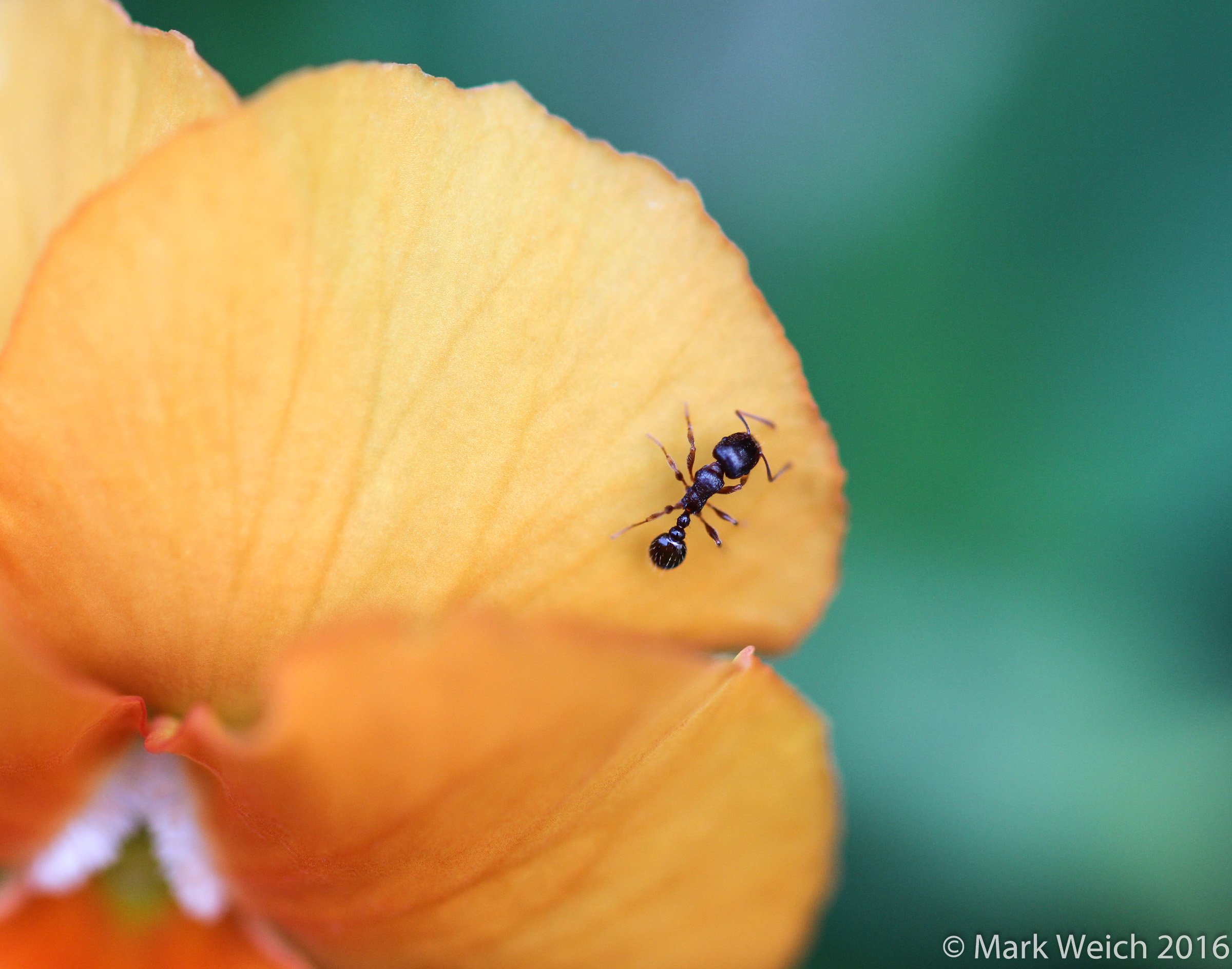
Ants are small and humble creatures and quite often this leads them to be underestimated. Each tiny ant, the species featured in this post is about 2-3mm long, is a part of a colony. Using rules and chemical cues to these tiny insects are capable of much more than would be expected of something so small: building amazing structures, climate controlled nests, even farming: sheparding aphids as livestock, or growing fungus in underground chambers.
Most often the ants we see are foraging, looking for food to bring back to the colony:
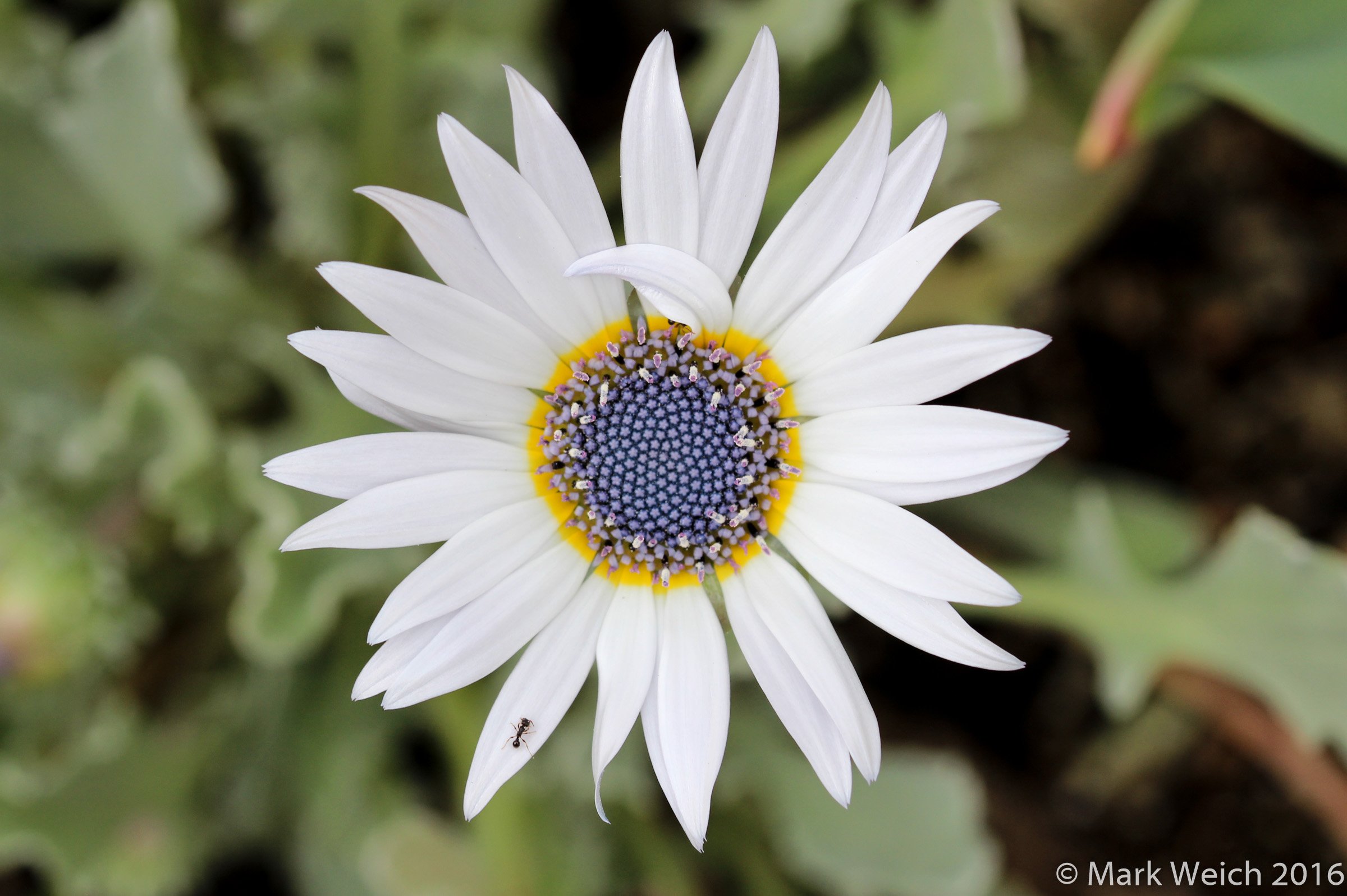
One of their favourite foods is the sugary nectar of flowers, this also brings them to surreal 'micro studios' which can produce dream like effects:
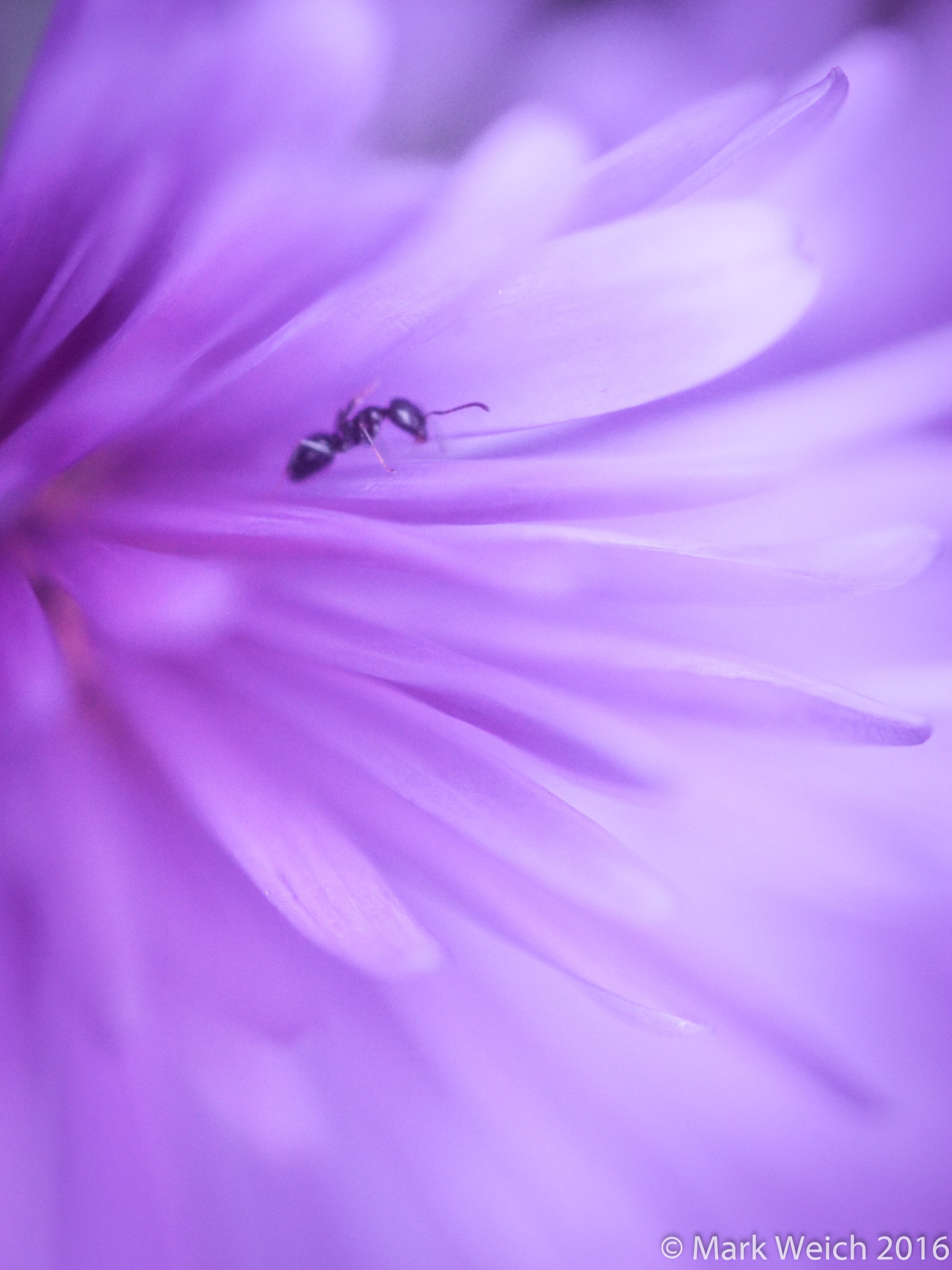
Upon a Dusty Miller plant, it seems these are tastiest just before the blossom:

Photographing ants is a bit challenging as they are quite active, constantly running around, and really don't take stage directions well.
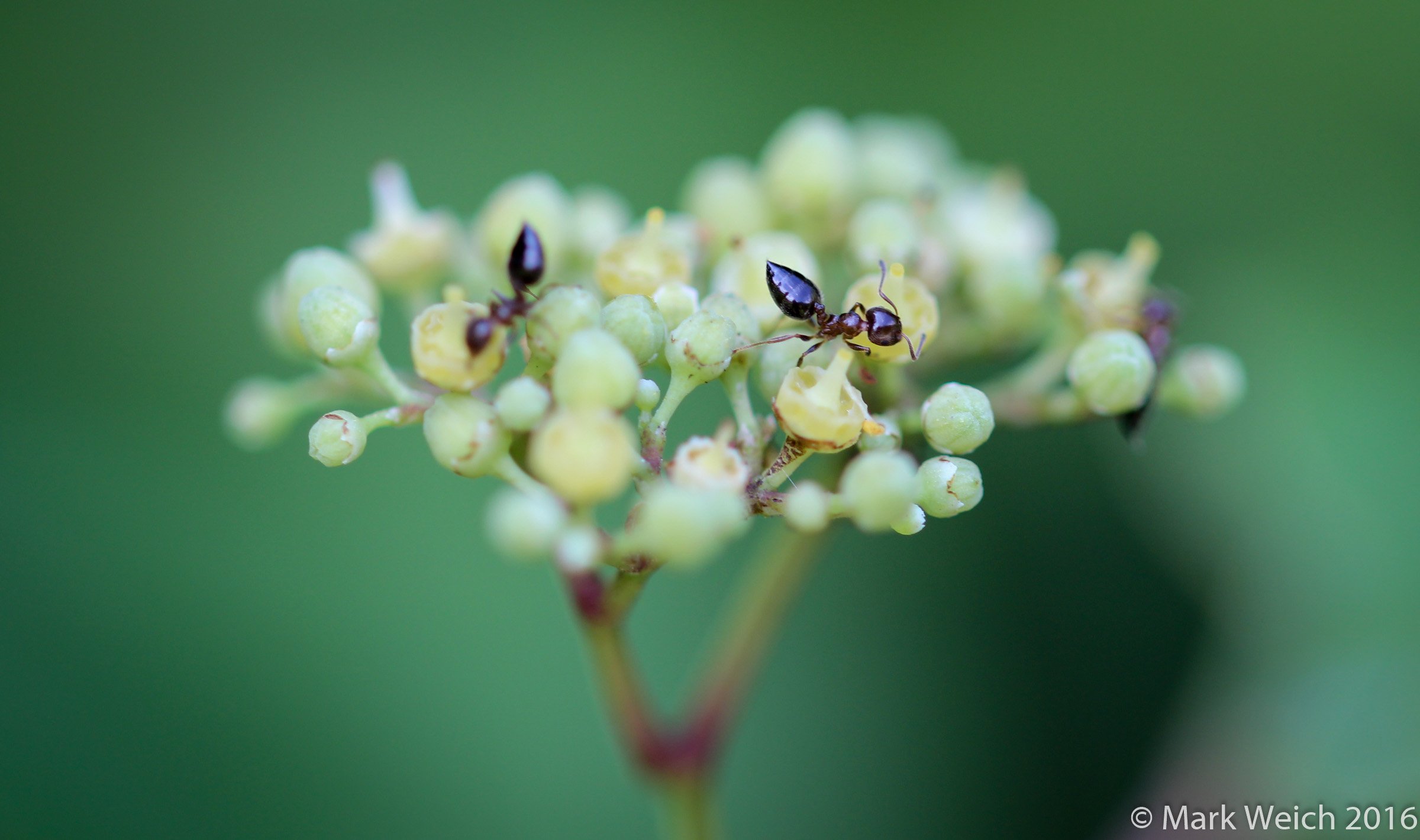
Here a single scout has encountered a snail, much larger than the ant, yet the snail is "sprinting" away as fast as it can.
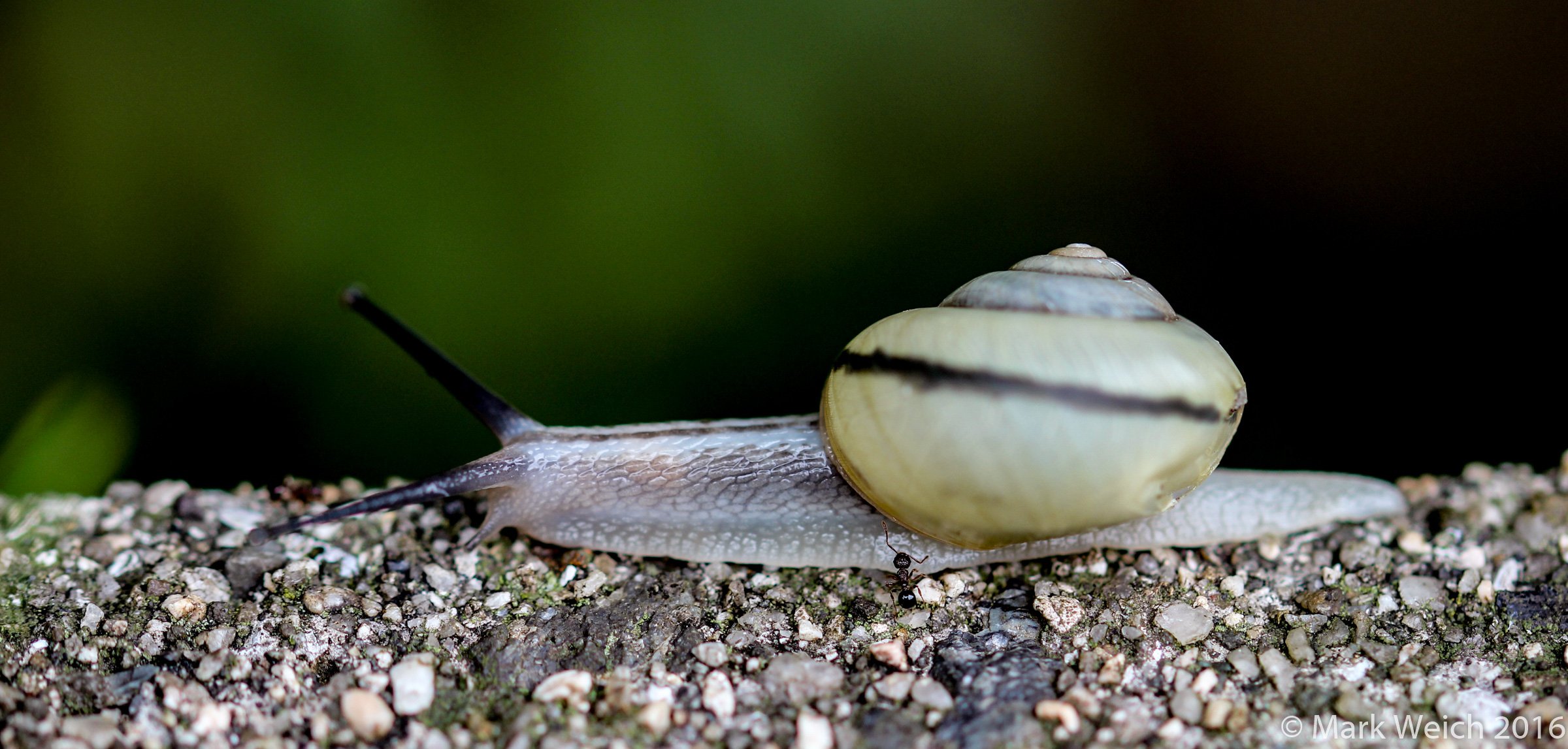
It has very good reason to do so:
while each individual ant is a rugged adventurer doing its best for the colony, searching for new resources to exploit once found it will set up a chemical trail to bring the rest of the colony to lend several thousand hands to help out. The true strength of the ant lies in the swarm:
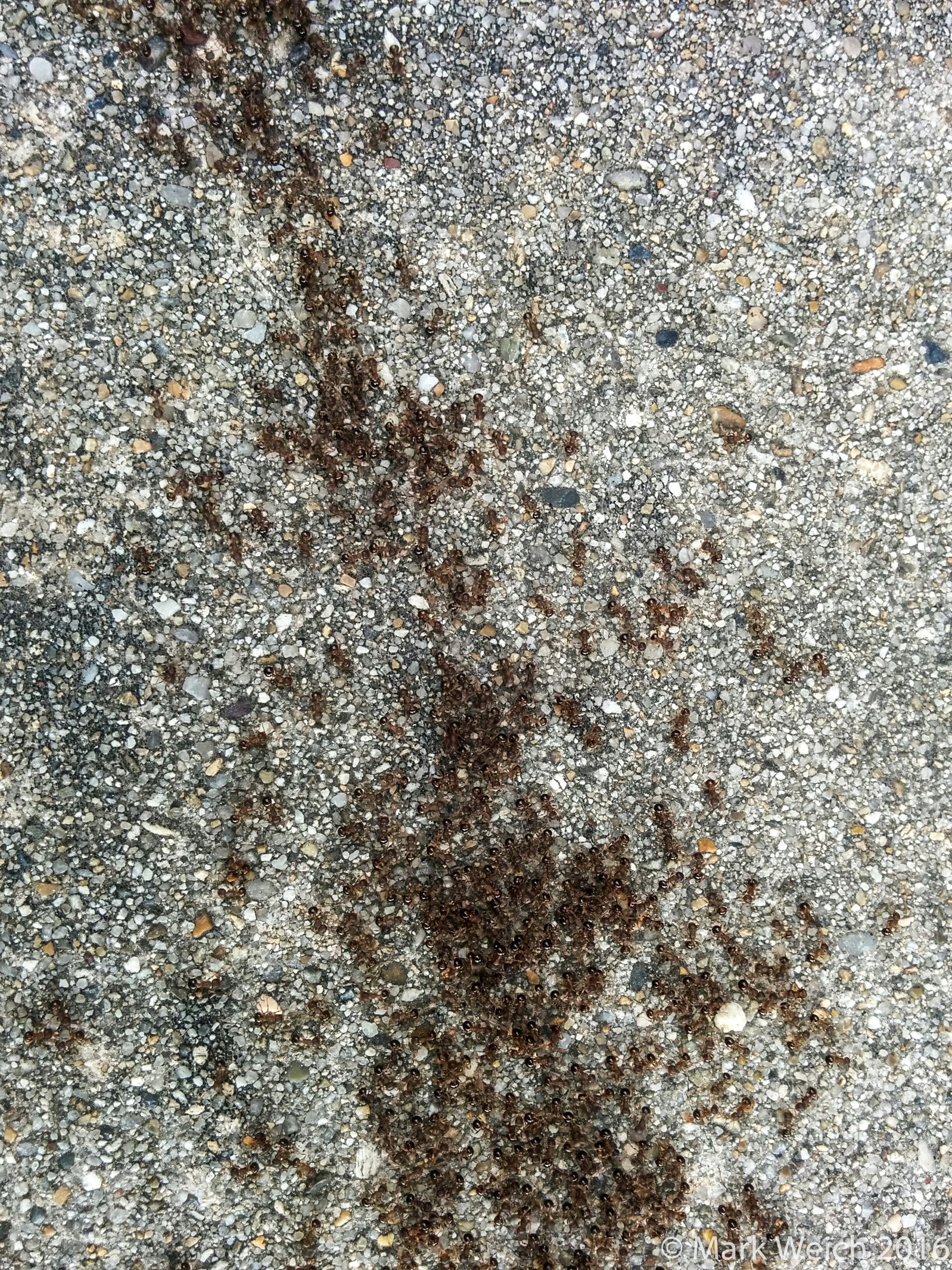
This was one small section of a trail of ants stretching about 15 meters, lining up an individual ant of 3mm for that length gives us 5000 ants, and at the thinnest sections there were at least three lanes for this ant super highway, so, 15,000! A bare minimum estimate and that is just the ones that could be seen!
When the weather is once again warmer and the ants are more active, I hope to document more of the local species which range from this tiny black ant to a rather large, again black, ant that was about 15mm and nearly every size in between those extremes.
Comments and feedback are always welcome.
Please upvote and follow to see the next installment in your feed!
Resteem if you think your followers would enjoy this post, thanks!
Also, if you like macro photography, check out some of the earlier posts in this series.
Little Monsters - Part I: Wolf Spiders
Little Monsters - Part II: Golden Orb Weaver
Little Monsters - Part III: Lynx Spiders!
Little Monsters - Part IV: Decorator Orb Weaver
Little Monsters - Part V: Black Back Paper Wasp
Little Monsters - Part VI: Dragonfly
Little Monsters - Part VII: Indian Fritallary
Little Monsters - Part VIII: Giant Japanese Hornet
Little Monsters - Part IX: Praying Mantis!
Little Monsters - Part X: Harlequin Ladybird!
Little Monsters - Part XI: Dragons!
Little Monsters - Part XII: Snails!
Little Monsters - Part XIII: Evil Weevils!
Little Monsters - Part XIV: Fantastic Phasmids!
Little Monsters - Part XV: To Bee or not to Bee?
Little Monsters - Part 16: Jumping Spiders!
Little Monsters - Part 17: Hawkmoth Caterpillars and Hawkmoths
Little Monsters - Part 18: Evil Doppelgangers - The Ant Mimic Spider
Little Monsters - Part 19: Hummingbird Hawkmoth!
Little Monsters - Part 20: Loud and Proud the Cicada!
Little Monsters - Part 21: Great Green Caterpillars!
Little Monsters - Part 22: Vespa mandarina japonica
I maintain and reserve copyright on all of my photos.
